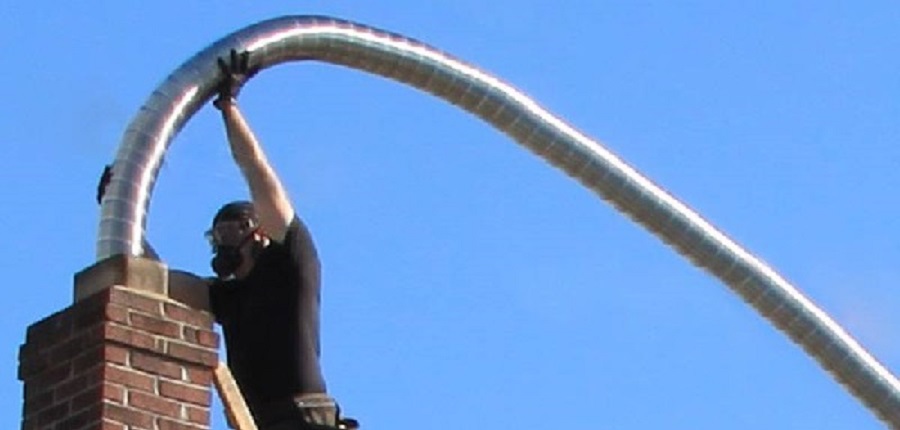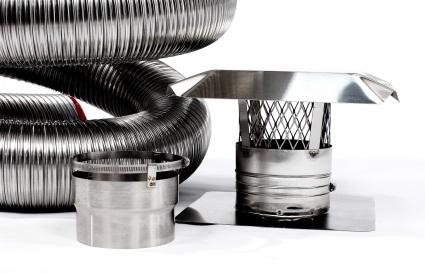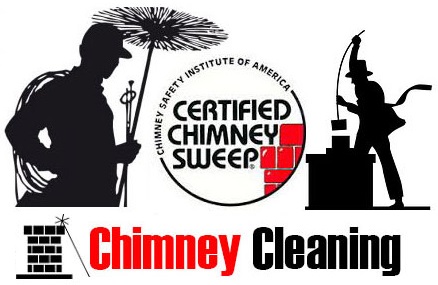
Reline With A Durable Stainless Steel Liner
Though man has been using fire to heat and add charm to his home since the beginning of time, it’s taken us no small amount of time to figure out how to do so as safely and efficiently as possible. In the past chimneys went unlined, followed by a time beginning around 1900 during which clay tiles were very commonly used to line chimneys. It was deemed necessary to line all chimneys following studies by the National Bureau of Standards in the 1940s and 1980s that determined that unlined masonry chimneys are criminally unsafe.
The advent of the chimney liner went a long way in allowing homeowners to enjoy their fireplaces and furnaces with much less worry of fire, carbon monoxide poisoning, or troublesome problems like smoky or stinky living spaces. The flues of most masonry chimneys nowadays are either lined or have been relined using stainless steel liners.
What Does A Chimney Liner Do?
 A chimney’s job is to contain the combustion products naturally generated during a fire and to direct these products outside of your home; a chimney liner helps a chimney perform that job far more easily. In fact, a liner serves all of the following purposes:
A chimney’s job is to contain the combustion products naturally generated during a fire and to direct these products outside of your home; a chimney liner helps a chimney perform that job far more easily. In fact, a liner serves all of the following purposes:
1) Protects your home from a chimney’s intense heat. In an unlined chimney, heat may transfer to adjacent woodwork, quickly posing a fire hazard.
2) Protects your chimney’s masonry. Combustion byproducts can be extraordinarily corrosive, wreaking havoc on chimney brick and mortar, which is porous and susceptible to damage from acidic flue gases. A chimney with compromised masonry will not only have a shorter lifespan but may present greater risks of house fires and carbon monoxide poisoning.
3) Corrects flue sizing issues. In order to work most efficiently and to prevent excessive creosote build-up and other problems, a stove or furnace must be equipped with the proper-sized flue. If you’re noticing smoke inside your home or unpleasant odors, then it may be that your flue isn’t the right size. By adding a stainless steel liner to a flue that is too big, the correct flue size can be achieved.

Why Do I Need A Stainless Steel Liner?
Although we are very passionate about how safe and durable stainless steel chimney liners are in wood-burning, gas, and oil applications, the truth is that your chimney may not require a stainless steel liner. If your chimney needs to be relined and isn’t currently outfitted with a stainless steel liner, there may be other options for your system. A number of chimneys are still lined with clay tiles, which are affordable and perform satisfactorily. However, clay isn’t as exemplary at absorbing and distributing heat or containing liquid combustion products common to gas appliances. Also, in time, clay tiles will crack.
Another option besides stainless steel is what’s called a “cast-in-place” liner, whereby a chimney is coated in a cement-like substance that reinforces it and protects it.
One of our chimney technicians will be able to evaluate your system and determine if your chimney’s liner can be repaired or resurfaced or it requires an all-new stainless steel liner. Call Davis Chimney today to schedule your chimney inspection or click here to request an appointment online!
HeatShield® is another option for relining some chimneys. Talk with our staff to see whether this option is right for you and your situation.


